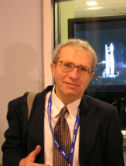Clinical outcomes of high-dose-rate brachytherapy and external beam radiotherapy in the management of clinically localized prostate cancer Journal Article
| Authors: | Kotecha, R.; Yamada, Y.; Pei, X.; Kollmeier, M. A.; Cox, B.; Cohen, G. N.; Zaider, M.; Zelefsky, M. J. |
| Article Title: | Clinical outcomes of high-dose-rate brachytherapy and external beam radiotherapy in the management of clinically localized prostate cancer |
| Abstract: | Purpose: To report prostate-specific antigen (PSA) relapse-free survival and treatment-related toxicity outcomes after combining high-dose-rate (HDR) brachytherapy with external beam radiotherapy (EBRT) for patients with clinically localized prostate cancer. Methods and Materials: Between 1998 and 2009, 229 patients were treated with HDR brachytherapy followed 3 weeks later by supplemental EBRT. The HDR brachytherapy boost consisted of three fractions of 192Ir (5.5-7.5Gy per fraction), and EBRT consisted of intensity-modulated radiotherapy delivering an additional 45.0-50.4Gy directed to the prostate gland and seminal vesicles. Median follow-up was 61 months. Results: Seven-year PSA relapse-free survival for low-, intermediate-, and high-risk patients were 95%, 90%, and 57%, respectively (p< 0.001). Among high-risk patients treated with biological equivalent doses in excess of 190. Gy, 7-year PSA relapse-free survival was 81%. In multivariate analysis, Gleason scores of ≥8 predicted for increased risk of biochemical failure, whereas the use of short-term neoadjuvant androgen deprivation therapy did not influence tumor-control outcomes even among intermediate- or high-risk patients. Seven-year incidence of distant metastases for low-, intermediate-, and high-risk patients were 5%, 3%, and 17%, respectively. Seven-year incidence of late Grade 2 and 3 genitourinary toxicities were 22.1% and 4.9%, respectively and the 7-year incidence of Grade 2 and 3 gastrointestinal toxicities were 1% and 0.4%, respectively. Conclusion: HDR prostate brachytherapy in conjunction with supplemental EBRT results in excellent biochemical relapse-free survival rates with a low incidence of severe late genitourinary or gastrointestinal toxicities. The use of short-term neoadjuvant androgen deprivation did not influence long-term biochemical tumor control in this cohort. © 2013. |
| Keywords: | prostate cancer; imrt; brachytherapy; radiation therapy; toxicity; high-dose rate |
| Journal Title: | Brachytherapy |
| Volume: | 12 |
| Issue: | 1 |
| ISSN: | 1538-4721 |
| Publisher: | Elsevier Science, Inc. |
| Date Published: | 2013-01-01 |
| Start Page: | 44 |
| End Page: | 49 |
| Language: | English |
| DOI: | 10.1016/j.brachy.2012.05.003 |
| PROVIDER: | scopus |
| PUBMED: | 22831750 |
| DOI/URL: | |
| Notes: | --- - "Export Date: 1 February 2013" - "CODEN: BRACC" - "Source: Scopus" |
Altmetric
Citation Impact
BMJ Impact Analytics
Related MSK Work








